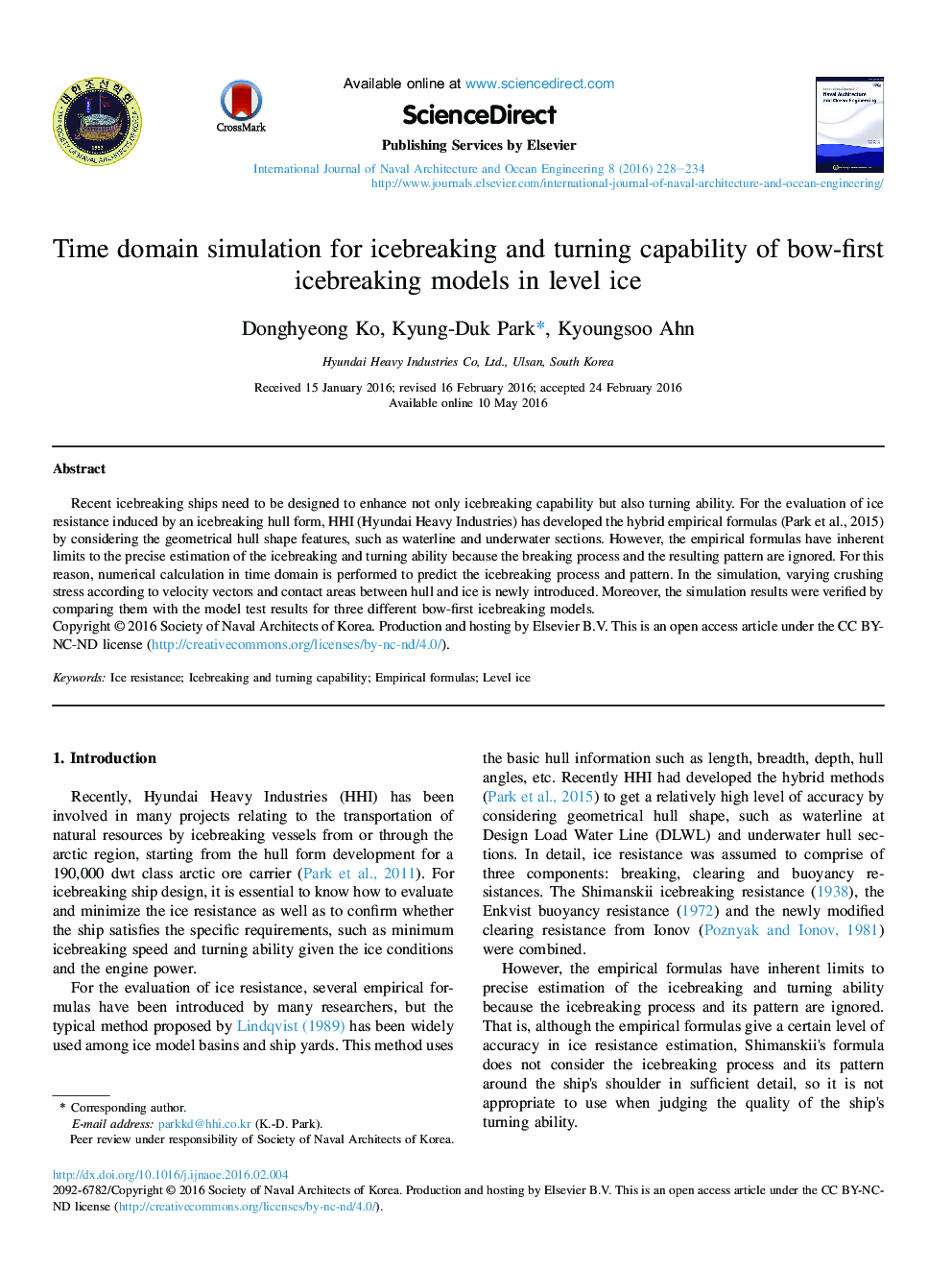| Article ID | Journal | Published Year | Pages | File Type |
|---|---|---|---|---|
| 4451622 | International Journal of Naval Architecture and Ocean Engineering | 2016 | 7 Pages |
Recent icebreaking ships need to be designed to enhance not only icebreaking capability but also turning ability. For the evaluation of ice resistance induced by an icebreaking hull form, HHI (Hyundai Heavy Industries) has developed the hybrid empirical formulas (Park et al., 2015) by considering the geometrical hull shape features, such as waterline and underwater sections. However, the empirical formulas have inherent limits to the precise estimation of the icebreaking and turning ability because the breaking process and the resulting pattern are ignored. For this reason, numerical calculation in time domain is performed to predict the icebreaking process and pattern. In the simulation, varying crushing stress according to velocity vectors and contact areas between hull and ice is newly introduced. Moreover, the simulation results were verified by comparing them with the model test results for three different bow-first icebreaking models.
